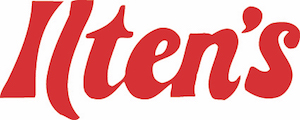
Ceiling fans are one of the most underappreciated ways to increase home comfort and lower energy costs. By boosting air circulation and working in conjunction with your HVAC system, ceiling fans and energy efficiency are truly a perfect combination. They offer a practical, cost-saving way to stay cool while easing strain on your AC—helping you avoid unnecessary air conditioning repair.
In this blog, the experts at Ilten's explain how ceiling fans can improve your comfort while increasing your HVAC efficiency. We'll also share some HVAC efficiency tips that take advantage of ceiling fans.
Comfort vs. Temperature: Staying Cool Using the Wind-Chill Effect Indoors
Ceiling fans don’t actually change the room’s temperature—they make your home more comfortable by blowing air across your skin. This is referred to as the wind-chill effect, and it can make a room feel up to 4 degrees cooler without touching the thermostat. That means you feel less hot and enjoy the benefits of indoor air circulation from your ceiling fan while using less AC—helping reduce your electric bill in summer.
The Best of Both: Advantages of Pairing Fans and Air Conditioning Together
There are several advantages to using ceiling fans and air conditioning in tandem, especially when it's very hot outside. By combining both, you maximize HVAC efficiency and keep your home cooler with less strain from your cooling system.
Benefits of using ceiling fans and AC together:
- Ceiling fans help lower HVAC load by distributing cool air more evenly around the room. Reducing HVAC stress is important, because it can help you avoid a breakdown that may result in premature AC or furnace installation.
- Using overhead fans improves your indoor comfort by getting rid of warm pockets and increasing airflow.
- Combining ceiling fans and AC can reduce overall energy use. If you have a home automation system, you can even adjust your smart thermostat settings to bump up the temp a few degrees while your ceiling fan is running.
Clockwise vs. Counterclockwise Ceiling Fan Rotation: What Direction to Spin in Summer and Winter?
To get the most out of your ceiling fans year-round, it’s important to make sure the blades rotate in the right direction for the season. The direction influences how air circulates, which can either cool you down or push warm air downward so you feel warmer.
When to rotate ceiling fans counterclockwise
On hot days, ceiling fans should turn counterclockwise at a quick speed. This creates a breeze that pushes cool air downward, amplifying the wind-chill effect and causing you to feel cooler.
When it's best to spin ceiling fans clockwise
In the winter, set your fan to spin clockwise on a slower speed. This lifts cooler air and draws warm air downward from the ceiling, helping you feel warmer without adjusting your thermostat.
How to Pick Out the Best Ceiling Fan for My Home
Selecting the right ceiling fan depends on a few important details, including blade design, airflow rating and room dimensions. First, look for fans with a good combination of ECFM airflow and blade pitch to provide efficient air circulation in your home:
- ECFM refers to how much air a fan pushes—the cubic feet per minute, or CFM—per watt of electricity consumed. Fans with greater ECFM are more energy efficient.
- Blade pitch is the incline of the blades. A sharper blade pitch moves more air but can also put extra load on the motor.
Also, consider room size when sizing a ceiling fan—a fan that’s too small won’t move enough air, while one that’s too big may be too strong for the space.
Boost Your HVAC Efficiency With Help from Ilten's
At Ilten's, our HVAC experts can help you maintain a cozy home while minimizing wear on your heating and cooling systems. From efficient ceiling fan strategies and air conditioning installation to smart thermostats and furnace repair, we offer comprehensive solutions that work with your budget. Set up your appointment by calling 319-343-5158 today.
